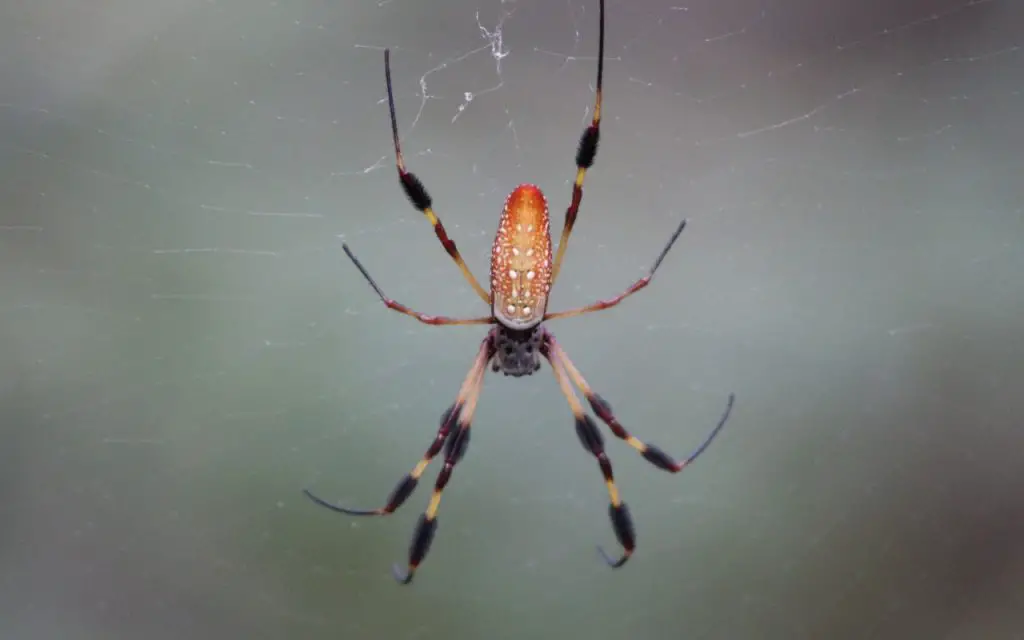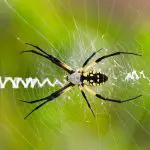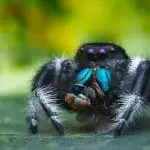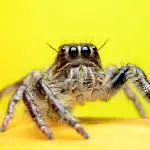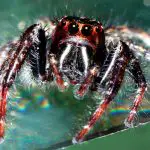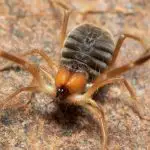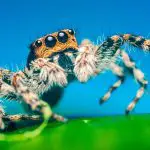Last updated on February 1st, 2023 at 09:58 am
Florida is naturally home to some incredible invertebrate species, but there’s also a whole host of invasive bugs that are now living there. Let’s find out what spiders are in Florida…
Florida’s weather and diverse insects make it suitable for spiders to thrive all year. Highly venomous as well as harmless species constitute the spider population in Florida. Finding spiders that are outside their usual environment is accounted for by human migration across the state and the importation of fruit and goods.
South Florida spiders
In North and Central Florida, the climate is humid subtropical, whereas that of South Florida is a tropical one. The diversity of insects is more in tropical climates.
The Florida spider population comprises at least 59 species of spiders. The combination of patterns and colors of a spider carapace (outer shell), and legs, is distinct to each species.
Common spiders in Florida include Jumping spiders, Golden Silk spiders, Crab spiders, Spiny- Orb-weavers, Green Lynx spiders, Wolf spiders, Black and Yellow Argiope spiders, and Long-jawed Orb-weavers.
The common spiders that South Florida houses are Banana spiders, Black Widow spiders, Orb weavers, Daddy Long Legs, Brown Recluse spiders, and Wolf spiders.
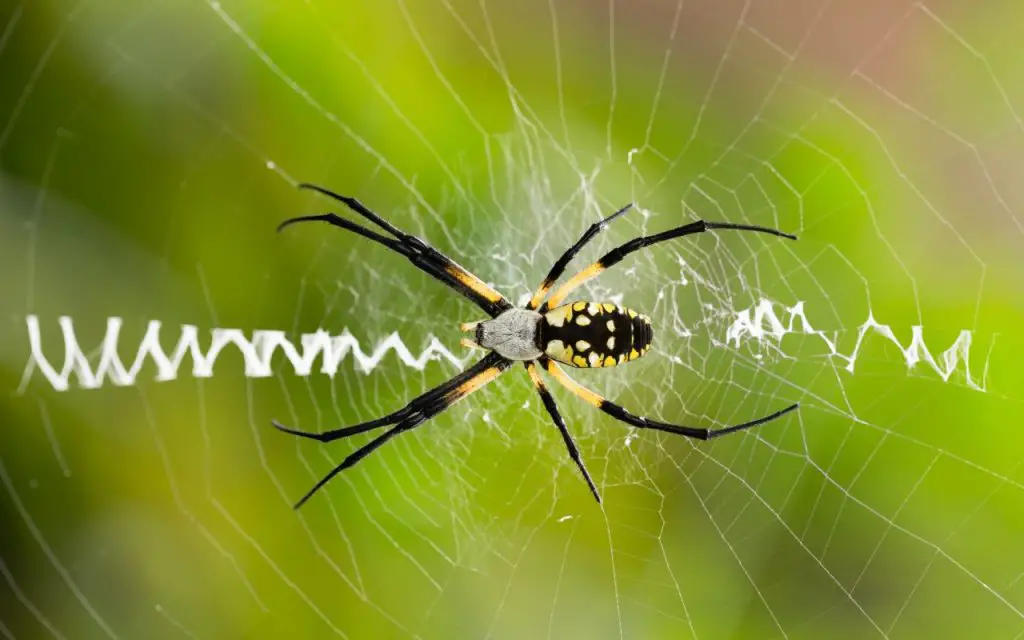
Common house spiders in Florida
These spiders are inside and outside the house (backyard, lawn, garden, etc.). The common house spiders found in Florida with their most probable location are listed below:
- Indoors- Triangulate House spider
- Mostly indoors- False Widow spiders, Funnel Web spiders (Grass Spider), Recluse spider
- Indoors and outdoors- Black Widow spider, Wolf spider, and Wall spider
- Mostly outdoors – Hunting spider (such as ground spiders and jumping spiders), Widow spiders of the Genus Latrodectus, Cellar spider (Daddy Long Legs), Nursery Web and Fishing spider species, and Huntsman spider
- Outdoors- Crab Spiders, Six-spotted Fishing spider, and Striped Lynx spider
Poisonous spiders in Florida
Most spiders found in Florida are not poisonous. Widow spiders and Recluse spiders are the two main venomous spiders in Florida. They do not bite unless they are disturbed.
Widow Spiders
The name comes from the potential of female spiders killing and eating the male after mating. Four of the five species are in Florida- Southern Black Widow, Northern Black Widow, Brown Widow, and Red Widow. The Western Black Widow is not in Florida.
The Black Widow spiders are shiny black in color and have a red hourglass shape on their abdomen. The Brown Widow spiders have a yellowish-orange or reddish-orange hourglass shape in the same place. Light color bands are on the legs of brown widows.
The bite contains a venom that has proven fatal to the nervous system. These spiders mostly habitat wood and rock piles, burrow, hollow trees, garages, sheds, and basements. Brown widows prefer open areas, unlike black widows.
Their average lifespan ranges from 3 months to 1.5 years.
Recluse Spiders
As their name suggests, they are reclusive. There are three species found in Florida. The Brown Recluse spider has a dark violin-shaped mark with variable colors. The Mediterranean Recluse is similar to the Brown Recluse spider and has a lighter violin mark with parallel sides. The Chilean Recluse has a darker violin mark that is wider in front than behind.
Apart from being the largest, the Chilean Recluse spider is the most dangerous of the recluse species.
Their physical features include- a violin mark on the head, six pairs of eyes, a uniformly colored abdomen with fine hairs, no spines on the legs, and uniformly colored legs.
Before sunrise, dark spaces like shoes, tarps, trash cans, plywood, rocks, dead trees, tires, and boxes provide shelter to them.
Their average lifespan ranges from 2 to 7 years.
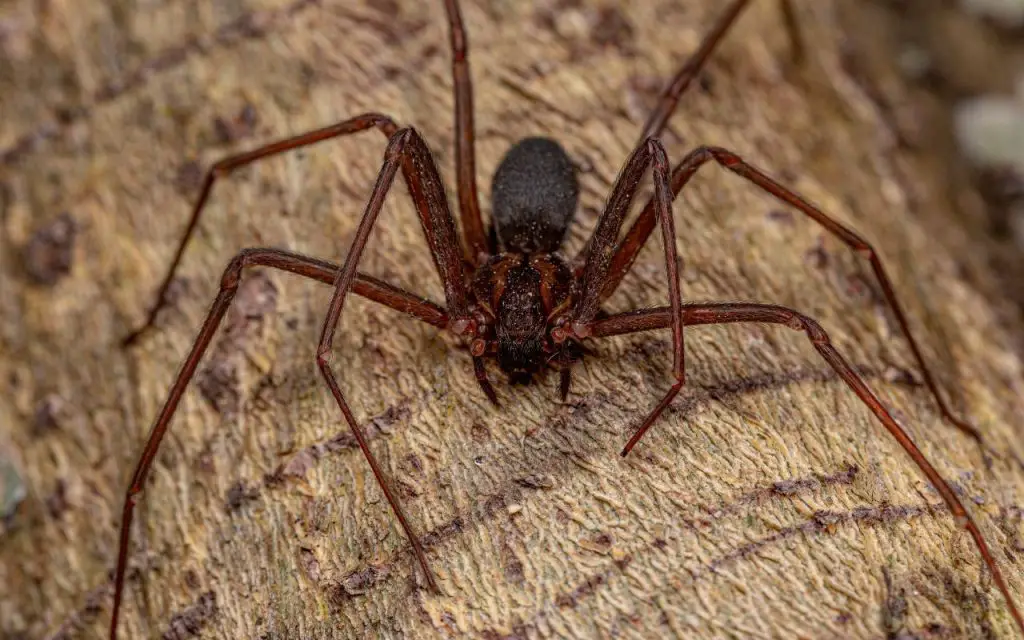
What is the deadliest spider in Florida?
The Southern Black Widow and the Chilean Recluse spiders are the most poisonous of their respective families. Of the two, the Southern Black Widow Spider is the deadliest.
The Black Widow spider bite has several effects. It ranges from swelling around its bite to intense neurological damage. It varies from person to person.
Symptoms include severe pain, breathing problem, muscle cramps, vomiting, sweating, and nausea. These can last 3-5 days if not treated. Calcium gluconate and antivenin can provide relief.
Chilean Recluse bite affects cells and tissues. Symptoms (itching, fever, muscle pain) occur within a few hours after the incident.
The bite heals with little scarring in a few days or weeks. Redness, blisters, blue discoloration, and necrosis can accompany it. Medicines, grafting of skin, and intravenous antibiotics are known to provide relief.
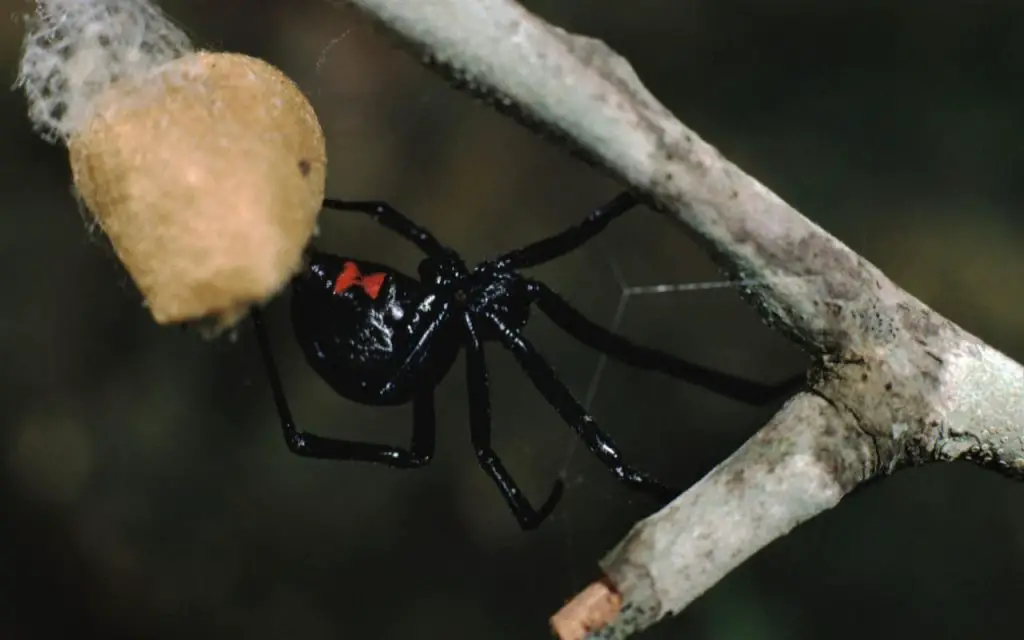
Tiny spiders in Florida
The commonly found tiny spiders in Florida are listed below-
- Jumping spider: All spiders are more than 15 mm long.
- Crab spiders: They are 5 mm to 10 mm in length.
- Spiny Orb-weaver: Females range from 5 mm to 10 mm in length and 10 mm to 14 mm in width.
- Green Lynx spider: Females are 12 mm to 20 mm long, whereas males can be more than 12 mm.
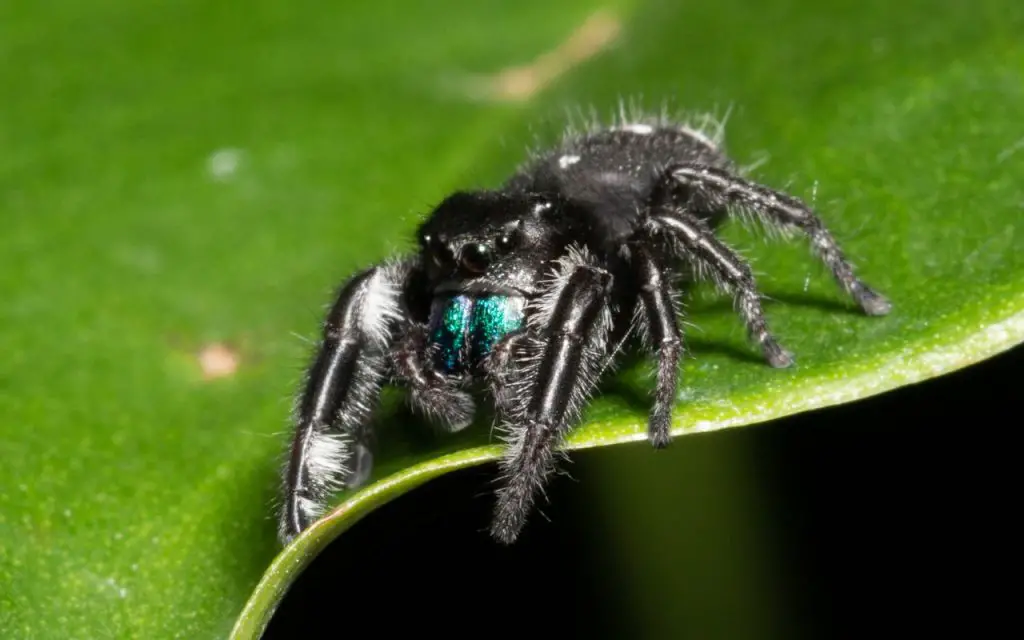
Large spiders in Florida
Some of the spiders in Florida that are large are as follows:
- Golden silk orb-weaver: Banana spiders can grow up to three inches long, with their legs reaching up to 5 inches across.
- Wolf spider: It grows up to one inch long, with legs up to two inches.
- Black and Yellow Argiope spider: The writing spider can be up to an inch.
- Widow spider: Females are around twice the size of males. The body can grow up to 0.5 inches long, with legs up to 1.5 inches across.
- Daddy Long Legs: A Cellar spider’s body can be up to 0.4 inches in length, with legs reaching around 2 inches across.
- Huntsman spider: An adult’s leg span reaches up to 6 inches. Females have bigger bodies and shorter legs when compared to males.
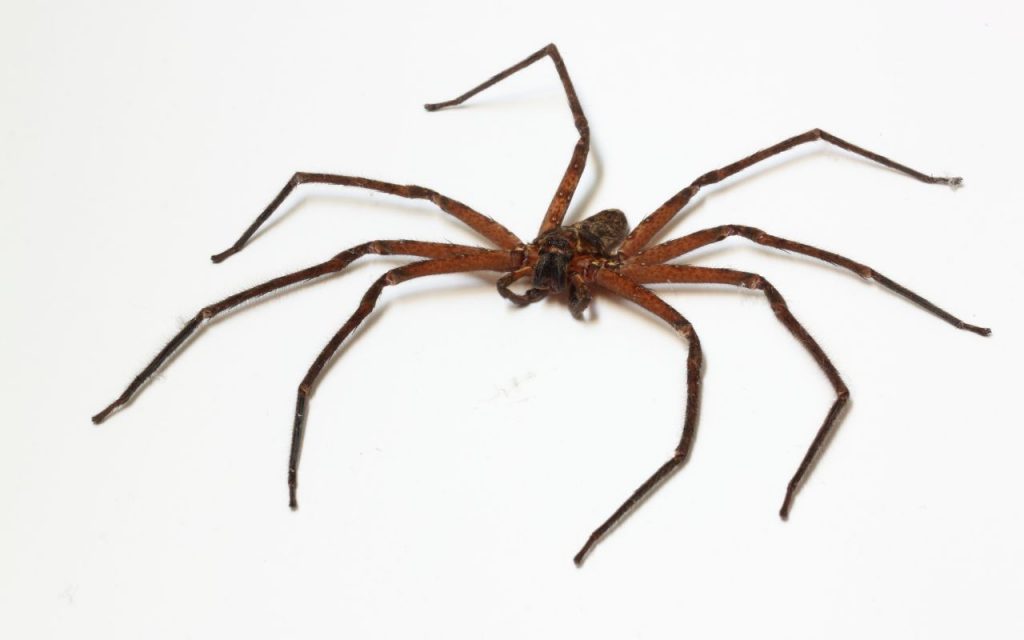
Wolf spiders in Florida
Wolf spiders constitute the Lycosidae family. Their highly contrasting colors make it difficult to be distinguished from their surroundings unless they are in motion.
It is one of the most common spiders in Florida; one can easily spot them on the ground, grass, and shrubs. Long hairy legs and eight eyes are characteristic of wolf spiders. Four eyes are in the front, two in the middle, and two on top of their head, making them different from other spiders.
Digging burrows and hiding under debris is their way of making shelter for themselves. These spiders do not spin their webs; they have the habit of hunting during the day and at night.
They have good eyesight and are adept at sensing vibrations. They usually hunt and live alone as wanderers.
They don’t bite unless provoked or disturbed. Wolf spider bites cause a minimal reaction as they don’t usually inject venom.
They are called wolf spiders due to their nature while hunting. Like wolves, these spiders are agile; they chase and pounce on their prey.
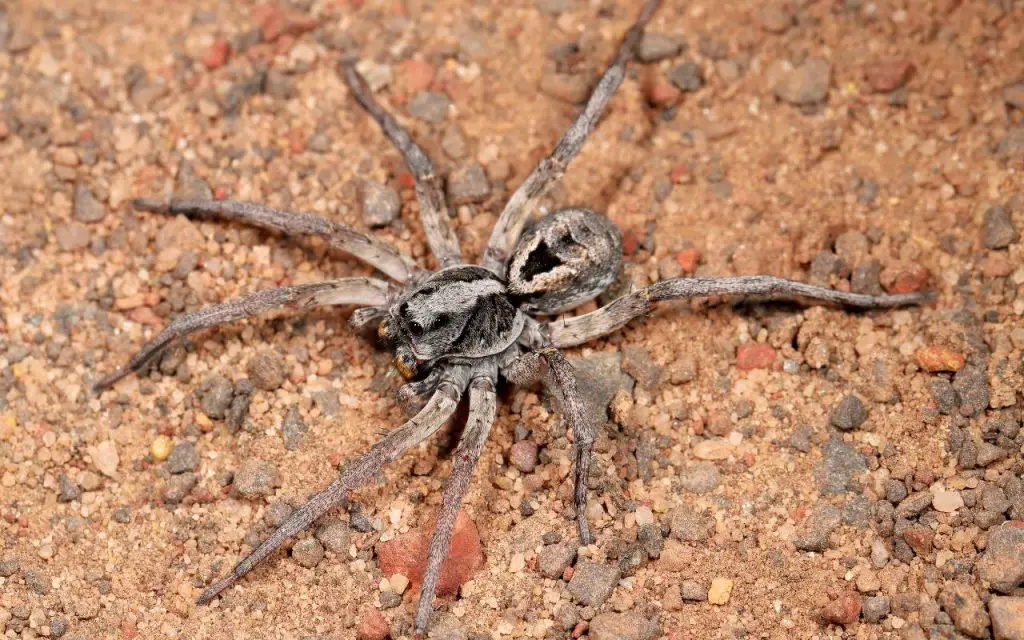
Crab spiders Florida
Crab spiders get their name because of their flat body and large legs in the front. They constitute the spiders in the Thomsidae family.
They are usually 5-10 mm long. These spiders have tiny eyes placed in two rows; the top row of eyes is wider than the one at the bottom.
Also known as Flower spiders, they are outdoors, hunting in flowers. Some spider species have developed in a way that makes them well-suited for camouflage among the flowers they choose to inhabit.
The colors of these spiders range from neon (yellow, orange, and green) colors to brown and gray. As they grow, they tend to shed their skin.
They are predators who do not spin webs. Their hunting style includes stalking and capturing other insects, which are walking and resting. They hunt during the day, which makes them Diurnal spiders.
Crab spider venom is known to paralyze bees that are big and resilient.
Their life cycle is usually less than a year, and they produce one generation annually.
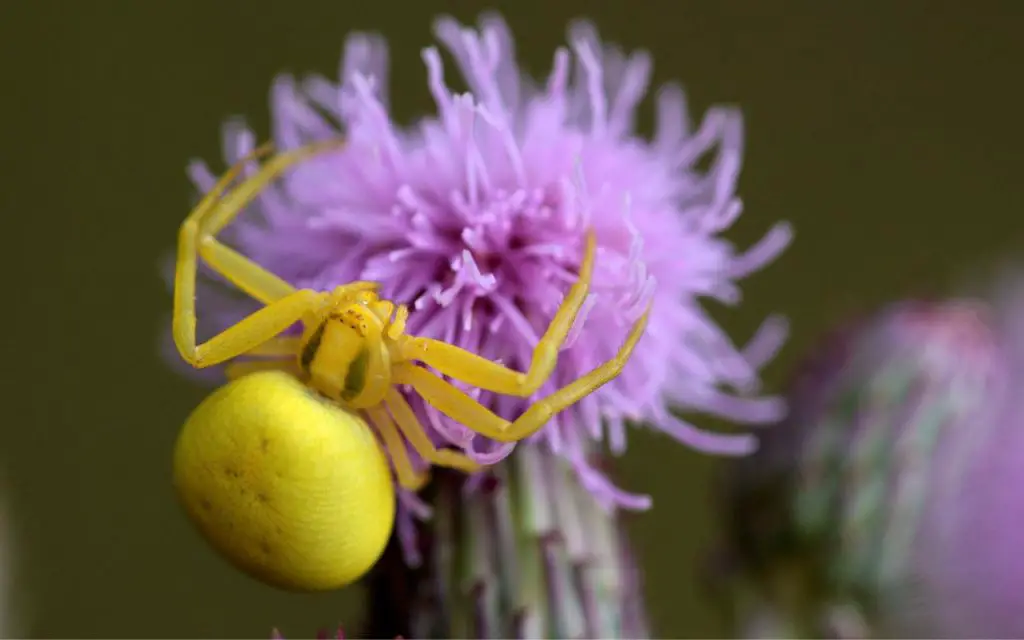
Banana spiders Florida
This spider goes by the names of Golden Silk spider, Trichonephila clavipes, and Nephila clavipes.
They are Banana spiders because the female has a silver outer shell with yellow spots on a dull orange-tan body, brown and orange banded legs, and hair brushes (gaiters) on parts of their legs. The males are dark brown, slender, and 6 mm long.
Their webs, located in trees and low shrubs, are usually in open areas. They are often more than a meter in size and aid in capturing flies.
The female of this species is the largest orb-weaver in the United States of America. The spider bites when disturbed, and the bite (less harmful than a bee sting) will cause localized pain with temporary redness.
Their lifespan ranges from a few days to a few weeks. Under suitable conditions, they have one generation annually.
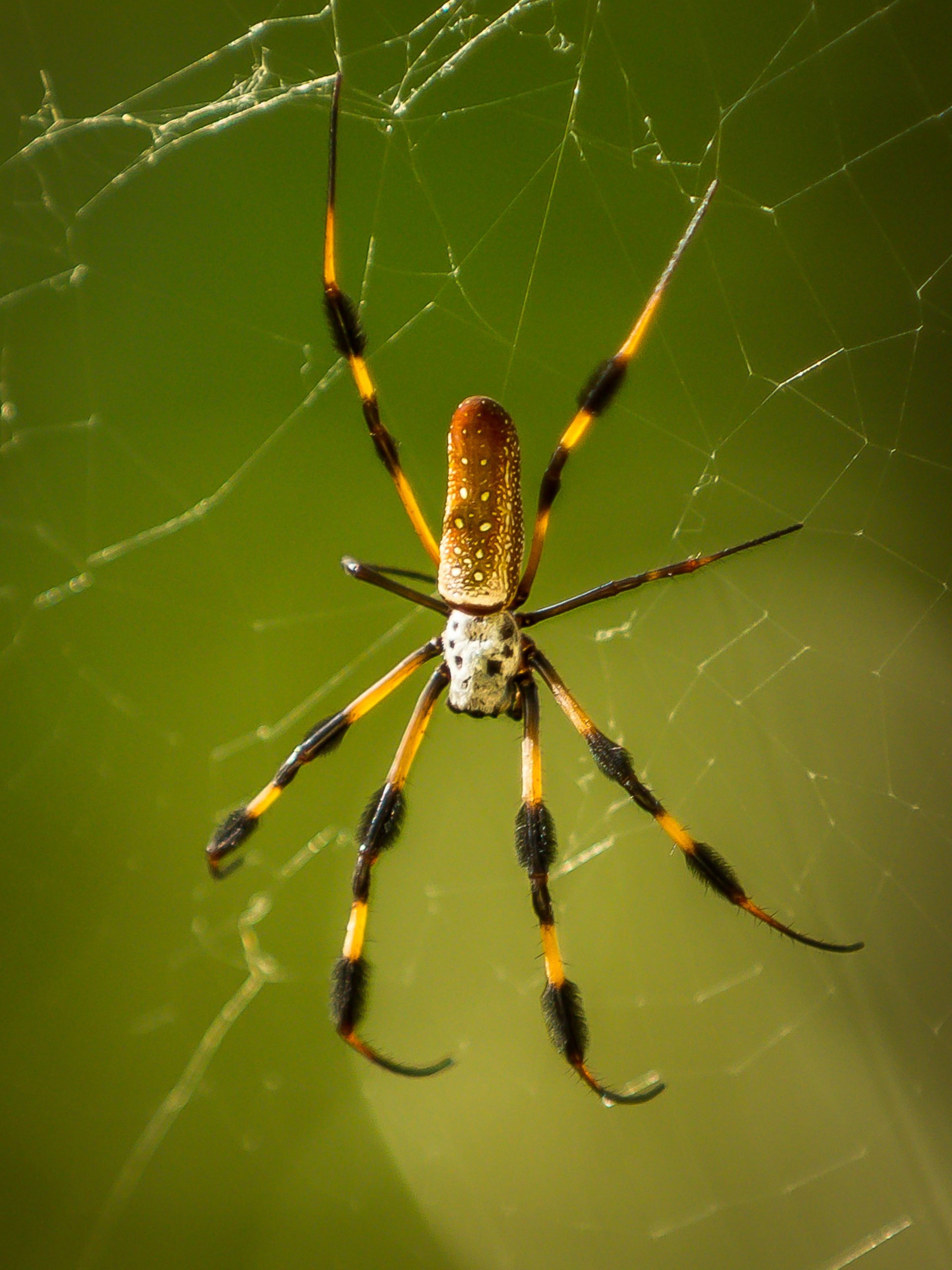
FAQ relating to what spiders are in Florida
What is the most common spider in Florida?
Among the harmless spiders, the Wolf spider is the most common, whereas the Red Reclusive spider and Black Widow spiders are common highly venomous spiders in Florida.
What is the poisonous spider in Florida?
The poisonous spiders in Florida are the Black Widow spider, followed by the Chilean Recluse spider. Striclty speaking though, the correct term is venomous.
Poisonous animals are thoses that are dangerous if eaten by others, whereas venomous animals are those that have an apparatus designed to introduce venom into a bite or scratch.
What are the most common house spiders in Florida?
The Triangulate House spider and the Common House spider represent two Cobweb spider species that rank as two of the most common house spiders in Florida.
Wolf Spiders often wander into houses, but it’s mostly by mistake and they do prefer to be outdoors. The time of year when most spiders enter homes is the fall, when they’re looking for somewhere warm.
What kind of spiders are found in Florida?
More than 50 species of spiders are found in Florida out of which harmless spiders outnumber venomous ones. These species range from Orb Weavers to Wolf Spiders.
There are no native tarantulas in Florida, though sightings of escaped pets are common. According to some sources, the Golden Red Rump Tarantula (Brachypelma albiceps) and the Mexican Red-rump Tarantula (Brachypelma vagans) are now established and breeding in parts of the state.

